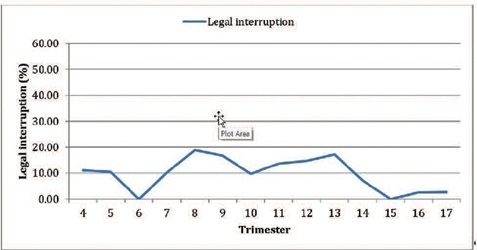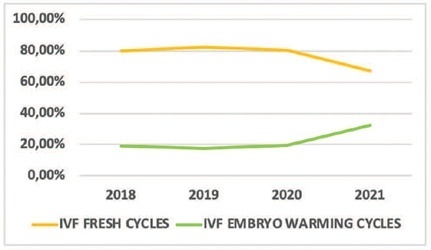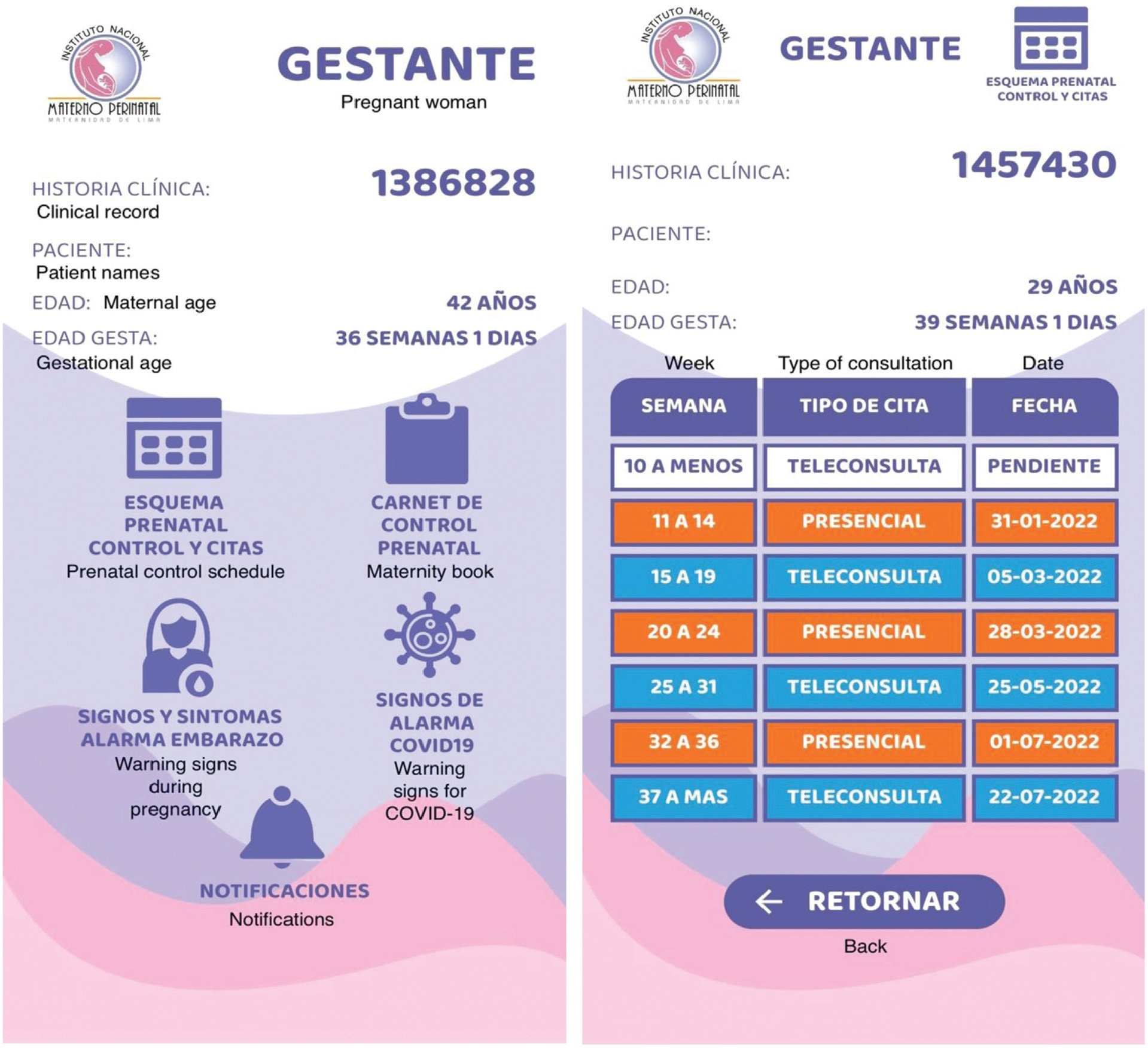Summary
Revista Brasileira de Ginecologia e Obstetrícia. 2023;45(7):371-376
To compare cesarean section (CS) rates according to the Robson Ten Group Classification System (RTGCS) and its indications in pregnant women admitted for childbirth during the first wave of the coronavirus disease 2019 (COVID-19) pandemic with those of the previous year.
We conducted a cross-sectional study to compare women admitted for childbirth from April to October 2019 (before the pandemic) and from March to September 2020 (during the pandemic). The CSs and their indications were classified on admission according to the RTGCS, and we also collected data on the route of delivery (vaginal or CS). Both periods were compared using the Chi-squared (χ2) test or the Fisher exact test.
In total, 2,493 women were included, 1,291 in the prepandemic and 1,202 in the pandemic period. There was a a significant increase in the CS rate (from 39.66% to 44.01%; p = 0.028), mostly due to maternal request (from 9.58% to 25.38%; p < 0.01). Overall, groups 5 and 2 contributed the most to the CS rates. The rates decreased among group 1 and increased among group 2 during the pandemic, with no changes in group 10.
There was an apparent change in the RTGSC comparing both periods, with a significant increase in CS rates, mainly by maternal request, most likely because of changes during the pandemic and uncertainties and fear concerning COVID-19.
Summary
Revista Brasileira de Ginecologia e Obstetrícia. 2023;45(5):261-265
To determine the existence of SARS-CoV-2 in the peritoneal fluid to assess the risk of exposure through surgical smoke and aerosolization threatening healthcare workers during abdominal surgery.
SARS-CoV-2 is a respiratory virus and possible ways of viral transmission are respiratory droplets, close contact, and fecal-oral route. Surgeries pose risk for healthcare workers due to the close contact with patients. Aerosolized particles may be inhaled via the leaked CO2 during laparoscopic procedures and surgical smoke produced by electrocautery.
All the data of 8 patients, who were tested positive for COVID–19, were collected between August 31, 2020 and April 30, 2021. Recorded clinicopathologic data included age, symptoms, radiological and laboratory findings, antiviral treatment before surgery, type of surgery and existence of the virus in the peritoneal fluid. Nasopharyngeal swab RT-PCR was used for the diagnosis. COVID–19 existence in the peritoneal fluid was determined by RT-PCR test as well.
All 8 COVID–19 positive patients were pregnant, and surgeries were cesarean sections. 1 of the 8 patients was febrile during surgery. Also only 1 patient had pulmonary radiological findings specifically indicating COVID-19 infection. Laboratory findings were as follows: 4 of 8 had lymphopenia and all had elevated D-dimer levels. Peritoneal and amniotic fluid samples of all patients were negative for SARS-CoV-2.
SARS-CoV-2 exposure due to aerosolization or surgical fumes does not seem to be likely, provided the necessary precautions are taken.
Summary
Revista Brasileira de Ginecologia e Obstetrícia. 2023;45(5):253-260
To evaluate the impact of the race (Black versus non-Black) on maternal and perinatal outcomes of pregnant women with COVID-19 in Brazil. Methods This is a subanalysis of REBRACO, a Brazilian multicenter cohort study designed to evaluate the impact of COVID-19 on pregnant women. From February2020 until February 2021, 15 maternity hospitals in Brazil collected data on women with respiratory symptoms. We selected all women with a positive test for COVID-19; then, we divided them into two groups: Black and non-Black women. Finally, we compared, between groups, sociodemographic, maternal, and perinatal outcomes. We obtained the frequency of events in each group and compared them using X2 test; p-values < 0.05 were considered significant. We also estimated the odds ratio (OR) and confidence intervals (CI).
729 symptomatic women were included in the study; of those, 285 were positive for COVID-19, 120 (42.1%) were Black, and 165 (57.9%) were non-Black. Black women had worse education (p = 0.037). The timing of access to the health system was similar between both groups, with 26.3% being included with seven or more days of symptoms. Severe acute respiratory syndrome (OR 2.22 CI 1.17–4.21), intensive care unit admission (OR 2.00 CI 1.07–3.74), and desaturation at admission (OR 3.72 CI 1.41–9.84) were more likely to occur among Black women. Maternal death was higher among Black women (7.8% vs. 2.6%, p = 0.048). Perinatal outcomes were similar between both groups.
Brazilian Black women were more likely to die due to the consequences of COVID-19.
Summary
Revista Brasileira de Ginecologia e Obstetrícia. 2023;45(6):347-355
To review the literature and synthesize evidence on pathophysiological interactions attributed to the simultaneous occurrence of COVID-19 and preeclampsia.
A systematic review was conducted from November (2021) to January (2022) to retrieve observational studies published on the PubMed, LILACS, SciELO Brazil and Google Scholar databases. The search was based on the descriptors [(eclampsia OR preeclampsia) AND (COVID-19)]. Quantitative studies that pointed to pathophysiological interactions were included. Literature reviews, studies with HIV participants, or with clinical approach only were excluded. The selection of studies was standardized and the evaluation was performed by pairs of researchers.
In this review, 155 publications were retrieved; 16 met the inclusion criteria. In summary, the physiological expression of angiotensin-converting enzyme-2 (ACE-2) receptors is physiologically increased in pregnant women, especially at the placental site. Studies suggest that the coronavirus binds to ACE-2 to enter the human cell, causing deregulation of the renin-angiotensin-aldosterone system and in the ratio between angiotensin-II and angiotensin-1-7, inducing manifestations suggestive of preeclampsia. Furthermore, the cytokine storm leads to endothelial dysfunction, vasculopathy and thrombus formation, also present in preeclampsia.
The studies retrieved in this review suggest that there is a possible overlap of pathophysiological interactions between COVID-19 and preeclampsia, which mainly involve ACE-2 and endothelial dysfunction. Given that preeclampsia courses with progressive clinical and laboratory alterations, a highly quality prenatal care may be able to detect specific clinical and laboratory parameters to differentiate a true preeclampsia superimposed by covid-19, as well as cases with hypertensive manifestations resulting from viral infection.
Summary
Revista Brasileira de Ginecologia e Obstetrícia. 2023;45(3):113-120
To evaluate the impact of the coronavirus disease 2019 (COVID-19) pandemic on the care of patients with miscarriage and legal termination of pregnancy in a university hospital in Brazil.
A cross-sectional study of women admitted for abortion due to any cause at Hospital da Mulher Prof. Dr. J. A. Pinotti of Universidade Estadual de Campinas (UNICAMP), Brazil, between July 2017 and September 2021. Dependent variables were abortion-related complications and legal interruption of pregnancy. Independent variables were prepandemic period (until February 2020) and pandemic period (from March 2020). The Cochran-Armitage test, Chi-squared test, Mann-Whitney test, and multiple logistic regression were used for statistical analysis.
Five-hundred sixty-one women were included, 376 during the prepandemic period and 185 in the pandemic period. Most patients during pandemic were single, without comorbidities, had unplanned pregnancy, and chose to initiate contraceptive method after hospital discharge. There was no significant tendency toward changes in the number of legal interruptions or complications. Complications were associated to failure of the contraceptive method (odds ratio [OR] 2.44; 95% confidence interval [CI] 1.23–4.84), gestational age (OR 1.126; 95% CI 1.039–1.219), and preparation of the uterine cervix with misoprostol (OR 1.99; 95% CI 1.01–3.96).
There were no significant differences in duration of symptoms, transportation to the hospital, or tendency of reducing the number of legal abortions and increasing complications. The patients’ profile probably reflects the impact of the pandemic on family planning.

Summary
Revista Brasileira de Ginecologia e Obstetrícia. 2023;45(3):142-148
To understand the impact of the coronavirus disease 2019 pandemic on in vitro fertilization (IVF) clinical pregnancy rates and analyze factors that may have influenced their outcome.
This was a retrospective observational study conducted at a tertiary-care Brazilian fertility center. All fresh IVF and embryo warming cycles performed from March 11 to December 31, 2018–2021 were analyzed, and their data were used to calculate fertilization, embryo cleavage, cycle cancellation, embryo transfer (ET), and clinical pregnancy rates. Statistical tests were used to evaluate the alterations found. Logistic regression models were used to explore the association of the categorical variables with the observed clinical pregnancy rates. Data from 2018 and 2019 (prepandemic) and 2020 and 2021 (pandemic) were grouped.
A total of 756 cycles were analyzed (n = 360 prepandemic and n = 396 pandemic). The age group of the patients, fertilization rates, and cleavage rates did not have significant differences (p > 0.05). There was a reduction in the percentage of fresh IVF and an increase in embryo warming cycles (p = 0.005) during the pandemic. There was also an increase in fresh cycle cancellations (p < 0.001) and a reduction in ET rates (p < 0.001). The pandemic had a negative impact on clinical pregnancy rates (p < 0.001) especially due to the increase in fresh cycle cancellations (p < 0.001).
Embryo warming cycles with subsequent frozen-thawed ET were presented as a viable alternative to continue assisted reproductive treatments against pandemic restrictions on fresh cycles, ensuring clinical pregnancy, albeit at a lower rate than that of the prepandemic period.

Summary
Revista Brasileira de Ginecologia e Obstetrícia. 2023;45(4):179-185
We describe the development and structure of a novel mobile application in a mixed model of prenatal care, in the context of the COVID-19 pandemic. Furthermore, we assess the acceptability of this mobile app in a cohort of patients.
First, we introduced a mixed model of prenatal care; second, we developed a comprehensive, computer-based clinical record to support our system. Lastly, we built a novel mobile app as a tool for prenatal care. We used Flutter Software version 2.2 to build the app for Android and iOS smartphones. A cross-sectional study was carried out to assess the acceptability of the app.
A mobile app was also built with the main attribute of being connected in real-time with the computer-based clinical records. The app screens detail information about activities programmed and developed in the prenatal care according to gestational age. A downloadable maternity book is available and some screens show warning signs and symptoms of pregnancy. The acceptability assessment was mostly rated positively regarding the characteristics of the mobile app, by 50 patients.
This novel mobile app was developed as a tool among pregnant patients to increase the information available about their pregnancies in the provision of a mixed model of prenatal care in the context of the COVID-19 pandemic. It was fully customized to the needs of our users following the local protocols. The introduction of this novel mobile app was highly accepted by the patients.

Summary
Revista Brasileira de Ginecologia e Obstetrícia. 2022;44(6):602-608
The aim of the present study is to list the published clinical trials on coronavirus disease 2019 (COVID-19) vaccines, to describe the mechanism of action of the identified vaccines, and to identify protocols regarding safety, status, and prioritization of cancer patients for vaccination.
This is a systematic review with a limited literature search conducted by an information specialist; key resources such as PubMed and websites of major cancer organizations were searched. The main search terms were COVID-19, vaccination, cancer, and breast and gynecological cancers.
Cancer patients infected with the new coronavirus are at high risk of complications and death, but we still know little about the risks and benefits of vaccination for COVID-19 in these patients. In an ideal scenario, all cancer patients should have their immunization status updated before beginning treatment, but this is not always possible.
Patients with breast or gynecological cancers who are receiving treatment or are in the 5-year posttreatment period should be included in the priority group for severe acute respiratory syndrome coronavirus-2 (SARS-CoV-2) vaccination.